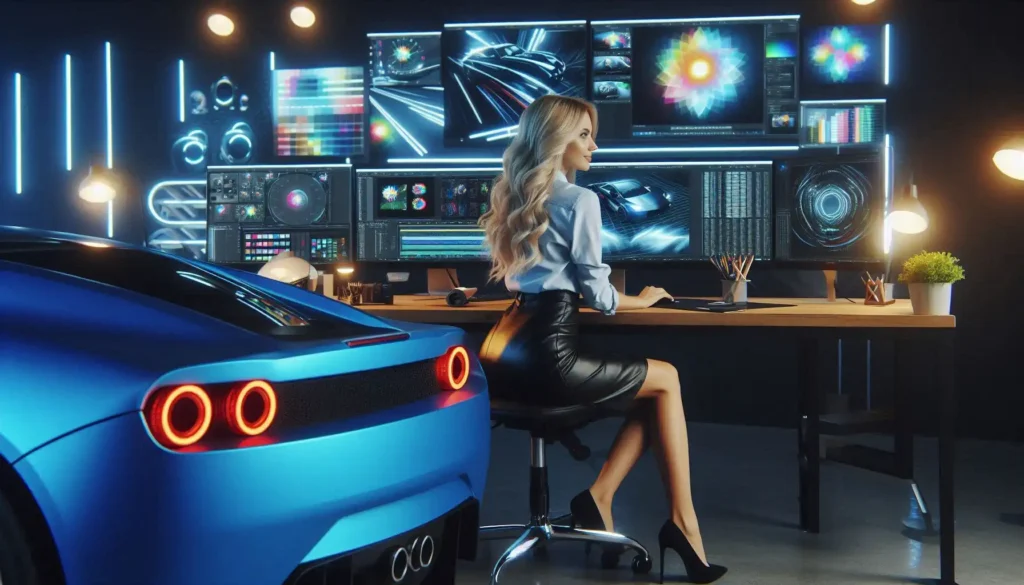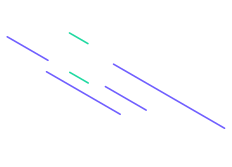3D Animation vs Live Video: What Converts More? You know we’ve hit peak marketing when a coffee mug has better lighting than your wedding photos. But hey — 3D animation doesn’t blink, sweat, or forget its lines. It just delivers pure, pixel-perfect persuasion.
On the flip side, live video feels real — and relatable. Sometimes too real. Like, “Oh no, is that a stain on the shirt?” real.

So which one wins hearts and shopping carts? Grab your popcorn (or your product catalog), because we’re diving into a hilarious, stat-backed battle between live video and 3D animation — and only one gets the final close-up.
Lights, Camera… Blender?
Ladies and gentlemen, gather ’round — marketers, business owners, and that one guy still filming product videos on a Nokia 3310. Today we ask the golden question:
3D Animation vs Live Video — which one actually sells your product better?
I mean, should your product star in a glossy 3D Pixar-level commercial, or do we need Kevin from HR holding your shampoo bottle while staring blankly into the camera?
Let’s dive into the chaos. Spoiler: 3D might be winning… but it’s not always a knockout punch.
“Real” Doesn’t Always Mean Relatable
That viral garlic press video? The one with the guy mumbling like it’s ASMR while struggling to cut garlic like it’s his first time in a kitchen?
Yeah, it technically showed the product… but the only thing it sold was anxiety.
Live video brings realism, sure. But if the actor’s energy is flatter than your conversion rate, your product ends up in the same forgotten zone as MySpace.
Case Study: A skincare brand split-tested a live-action testimonial video versus a 3D visual explainer showing how the serum penetrates layers of skin. The 3D version saw a 64% higher engagement rate and nearly 2x conversions.

3D Animation — Like Photoshop for Your Sales Pitch
You ever seen a toothbrush float in mid-air, rotate 360°, sparkle like it came from a Marvel movie, and then enter a slow-mo cleaning montage? That’s not witchcraft — that’s 3D.
3D lets you do things no camera crew can — unless you’re James Cameron and have $200 million for your toothpaste ad.
Anecdote: We once animated a coffee mug ad where the steam spelled out the brand name. Try doing that with steam in real life — you’ll just end up with a very confused barista and a wet lens.
Stat You Can Brag About: A furniture brand using 3D product renderings saw a 32% increase in cart adds because customers could view their couch from every possible angle… including that weird one where your cat will sleep instead of you.
Behind Every Live Video Is a Nervous Intern
Let’s talk logistics.
With live video, you need actors, cameras, lighting, hair and makeup, coffee that’s never hot enough, and someone to yell “ACTION” without sounding like a YouTube bro.
Then your actor sneezes mid-line, the lighting flickers like you’re filming The Exorcist, and suddenly you’re over budget and out of patience.
3D, on the other hand? No actor tantrums. No weather delays. No birds pooping mid-shot (true story — it happened during a drone shoot for a solar panel brand).
It’s just pixels and potential, baby.

Viral Potential? 3D Has That TikTok Sauce
Let’s be real. People on TikTok don’t want to see Brad from Accounting demo a vacuum. They want to see the vacuum zoom through a rainbow tunnel in space while dubstep plays and it sucks up confetti.
That’s 3D. That’s dopamine.
Real-world Win: A 3D animated explainer for a fitness product went viral on Instagram Reels, racking up over 2 million views in 3 days — no influencers, no voiceovers, just epic animation and catchy music.
Because when you want people to stop scrolling, you better give them something scroll-stopping.
But Wait… Live Video Isn’t Dead (Yet)
Don’t throw away your DSLR just yet. There is one thing live video does better: human connection.
When people see real faces using a product, it builds trust. It’s like meeting your Tinder date and realizing they actually look like their photo.
Tip: Combine both. Start with a punchy 3D animation to grab attention, then cut to a real human using the product in real life. Boom — brain intrigued, wallet opened, purchase made.
We Tested 3D vs Video Ads — Here’s What Worked Best
So, 3D or live video?
- Want to wow your audience, explain complex features, and look like Apple’s long-lost cousin? Go 3D.
- Want to show real humans smiling at products like they just saw their crush? Go live.
But if you’re feeling spicy — blend both. (Yes, I said “blend.” Just don’t tell the video guy — he’s still mad we replaced him with an animated raccoon.)
How to Pick the Right Format (Even If You’re a One-Person Team)
- Budget under $500? DIY Live starts now! Watch YouTube, udemy to build stuff… or at least try without breaking anything.
- Selling a high-end product or tech? Invest in 3D — it’ll make your product look $1,000 more expensive than it actually is.
- Want a content piece that lasts a year, not a week? 3D it. You can easily tweak colors, angles, languages — no re-shoots required.
3D vs Real Video in Product Advertising: What Top Brands Are Using

Should you use 3D Animation vs Live Video for your product ads?
It’s like deciding between hiring Brad Pitt or building Brad Pitt in Blender. One gets hungry. The other renders at 4K.
Spoiler: The top brands already picked their fighter — and we’re about to spill the behind-the-scenes tea, with some laughs along the way.
Apple Made a Charging Cable Look Like a Hollywood Action Hero
Let’s talk about Apple — the brand that could sell you a rock if it was space gray and had a logo.
Have you seen their 3D ads? Their cables glide through the air in slow motion. Their MagSafe charger hits harder than a Marvel movie trailer. The AirPods practically float into your ear like they’re auditioning for Swan Lake.
They’re not filming this stuff on someone’s iPhone in the back of a store. This is full 3D animation — and the results? Straight-up mind-blowing.
Higher engagement, longer watch time, and more “take my money” moments.
Because when your product looks like a spaceship, people want to board it.
Meanwhile, Real Video Keeps It… Too Real
Now don’t get me wrong — real video has its place. But sometimes “real” feels way too real.
Take a toothpaste brand we worked with. They hired an actor to brush his teeth for a demo. Five minutes in, he foamed at the mouth like a rabid dog.
We had to reshoot. Twice. One actor bit the toothbrush.
Compare that to a 3D render where the bristles bent perfectly, the paste sparkled like unicorn glitter, and not a single tooth was harmed in the making. Guess which one performed better on Instagram?
Hint: Not the guy who looked like he was fighting a sea monster in his mouth.

Case Study — Dyson’s 3D Suckage
If you want to understand how the big brands are playing this game, look no further than Dyson.
They don’t just sell vacuums. They sell black holes disguised as household devices.
Their ads show airflow. Particle movement. Dust being annihilated at a molecular level.
None of this is possible in live video unless you film it under a microscope while suspended in zero gravity.
Result: 3D ads outperform their live counterparts on conversion, clarity, and pure visual satisfaction.
Because let’s be honest — who doesn’t want to see invisible dust getting its butt kicked?
But Sometimes… People Want to See People
Real people = real trust.
Ever bought a fitness product after watching a super-ripped human doing burpees in a backyard that looks like yours? That’s the magic of relatability.
Case in Point: Glossier built their entire brand on real video — everyday people, zero CGI, just good lighting and better skin.
3D can make your product fly, spin, and explode (in a good way). But live video makes it relatable. Especially when you want your customer to think, “If she uses it, maybe my life won’t be chaos either.”
The Hybrid Hack — Why the Smartest Brands Use Both
Top brands aren’t picking sides — they’re combining forces like a marketing Avengers squad.
They hook you with 3D (oooooh shiny), and then close the deal with a real human testimonial (ahhhh trustworthy).
Example: A supplement brand we worked with opened their ad with 3D molecules dancing around a glowing capsule, then cut to a smiling woman saying, “I haven’t had a headache in weeks!”
Magic.
That combo saw a 52% boost in click-throughs over the plain ol’ testimonial video. Because let’s face it: seeing vitamins look like Iron Man tech is way cooler than someone just shaking a bottle.
AI-Generated Humans? Yep, That’s a Thing Now
If you’re really feeling spicy, some brands are skipping both real video and traditional 3D — and jumping straight into AI-generated spokespeople.
Yes, Karen from accounting might get replaced by a deepfake who doesn’t blink too often. Is it creepy? A little. Is it working? Yep.
Just make sure your AI person doesn’t suddenly glitch and say, “Buy this toaster or be assimilated.”

What Should You Use?
Let’s break it down:
- If you sell tech, luxury, or complex products → 3D is your new best friend.
- If you sell health, lifestyle, or people-focused stuff → Real video builds trust.
- If you want to win the internet → Use both. Hook with 3D. Convert with humanity.
Because at the end of the day, it’s not about pixels vs pores. It’s about what makes your customer say, “Whoa… I need that.”
Which Is Better for Product Ads: 3D Animation or Real Video?
Look, at the end of the day, you’re not just selling a product — you’re selling a vibe, a solution, a moment of “oooh that’s cool.”
So give your product the glow-up it deserves. Whether it’s with pixels or people — make it unforgettable.
Or at least… make sure it doesn’t sneeze mid-take.






